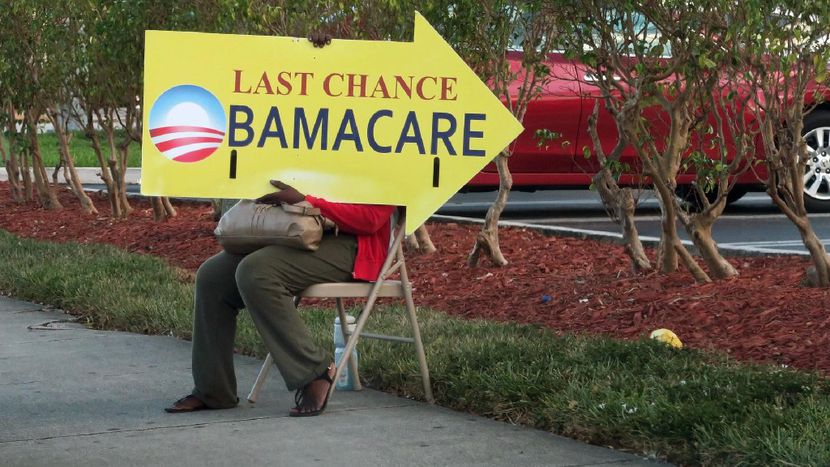By John C. Goodman
Originally posted at Forbes, August 2016
Obamacare cannot continue as it is currently structured.
The planned exodus of Aetna from 11 of 15 states follows on the heels of retreat announcements by United Healthcare and Humana. In many places, the only insurer left next year will be Blue Cross. Like the commercial insurers, however, Blue Cross plans across the country are also hemorrhaging red ink. Texas Blue Cross, for example, is asking for a 60 percent rate increase.
A study by Avalere predicts that next year more than one-third of the exchanges will have only one insurer left. More than half the exchanges will have two insurers, at most. We were promised competition. What we are getting instead is monopoly, at best duopoly.
As premiums soar, the choice of doctors and hospitals is dwindling. The Blue Cross offering in Dallas originally looked like a high grade employer plan. But like two thirds of the plans nationwide, the insurer has now switched to HMO coverage only. There is not a single exchange plan in Dallas that currently covers the highly prestigious Southwest Medical Center or the equally renowned Children’s Medical Center. Ominously, the only plans that appear to be avoiding losses are ones that look like Medicaid and are run by Medicaid contractors.
Most of the attention has focused on the demand side source of these problems. Eligible enrollees are sitting on the side lines while they are healthy and buying health insurance only after they get sick. Enrollees are double dipping – signing up for both Medicaid and a private exchange plan. Providers are enrolling Medicare and Medicaid eligibles in private plans (even paying the premium for their patients) in order to get the higher reimbursement rates private plans typically pay.
An even bigger source of trouble is on the supply side. Health plans are being allowed to dump their sickest, most costly enrollees on their rivals with impunity. For example, 35 state risk pools were allowed to send their high cost enrollees into the exchanges, where they began paying premiums far below the cost of their care. Ditto, for Obamacare’s federal risk pool. The city of Detroit was allowed to dump 10,000 early retirees into an exchange, paying far less in premiums than the medical costs that traveled with them. Other financially stressed cities with unfunded post-retirement health care liabilities are following suit. Given the irresistible temptation to let others pay their bills, can the nation’s largest employers be far behind?
Obamacare is experiencing two kinds of death spirals: the upward spiral of price and the downward spiral of quality.
As for prices, a death spiral exists if there is no premium the insurer can charge that will allow it to cover its costs. If it is experiencing losses, it may try to recover by raising the premium. But that will scare away the healthiest enrollees and their desperately needed contributions to the insurance pool.
This process can continue until there is no one left in the pool other than the most costly enrollees — who cannot possibly pay the premium needed to cover the cost of their care. Or, the insurer can avoid this painful process by cutting its losses and leaving the market early on.
As for quality, we are experiencing a race to the bottom. Although there are a few exceptions and nuances along the way, for the most part, insurers face perverse incentives to attract the healthy and avoid the sick. The conventional wisdom in the industry is that healthy people buy on price. Only the sick spend time looking to see what doctors and facilities are in the health plan’s network.
After enrollment, the insurers have a perverse incentive to over-provide to the healthy (to keep the ones they have and attract more of them) and under-provide to the sick (to encourage the exodus of the ones they have and discourage enrollment by any more of them). They are acting on those incentives.
So what can be done? Republicans in Congress have proposed two good ideas that will help on the buyer side. First, no more gaming. Paul Ryan’s health task force proposes to protect those with pre-existing conditions only if they are continuously insured. People who fail to enroll when they are first eligible could be charged a higher premium (as is done in Medicare Parts B and D) or even charged a premium that reflects their health status (as is done in the Medigap market).
Second, instead of the 3 to 1 premium spread required by Obamacare, they would allow premiums to vary by as much as 6 to 1, depending on age. This means that 20-year-olds would no longer be overcharged in order to subsidize 60-year-olds. Instead, each age group would be charged a premium that reflects average costs for people of that age. This change would bring more healthy youngsters into the market and it would discourage employers from trying to shift their post-retirement health care costs onto the individual market.
On the supply side, a proposal by Rep. Pete Sessions (R-TX) and Sen. Bill Cassidy (R-LA) would insure that health plans always receive actuarially fair premiums. So if a new enrollee has expected costs of, say, $100,000 the plan would get $100,000 in premiums. The enrollee would pay a community rated premium – just like everybody else. The balance would be paid by the previous insurer.
This article was originally posted at Forbes on August 26, 2016.

0 Comments